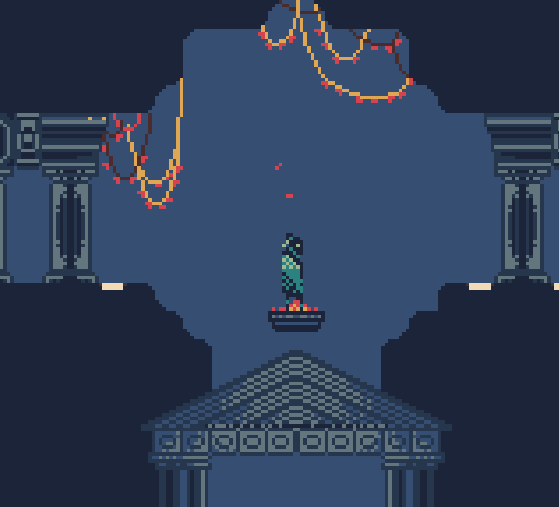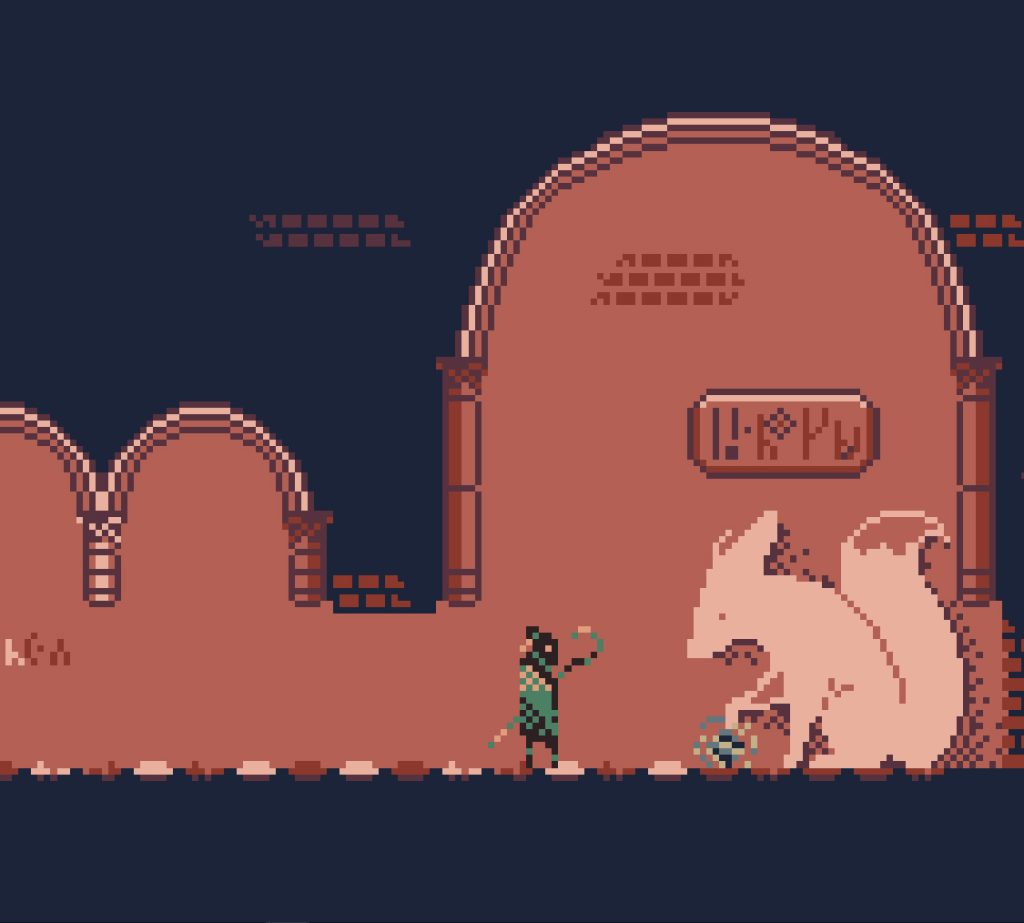For GB Studio coder Baptiste, known in the scene as Yliader, his love for all things Game Boy started at the tender age of nine when he first played The Legend of Zelda: Oracle of Ages & Oracle of Seasons on his Game Boy Color. It was his first console and holds strong, sometimes heartbreaking memories for him, as he explains: “I come from a separated family, so video games were a kind of emotional palliative. At my mother’s house, I played my Game Boy under the duvet, for three to four hours straight. When I was a teenager, my father sold a lot of our stuff to buy a GameCube and I spent my high school on it. I played Twilight Princess, but it was too emotional for me and I told myself never again, it’s too intense.”
When Baptiste was seventeen, he wanted to get as far away from his parents as he could and didn’t play many games while studying archaeology. However, he still remembered his experiences playing games and started to store ideas about making games. It was when he encountered RPG Maker in 2011 that the idea of becoming a game developer took off. “I spent something like 300 hours on a project that was too big and never came to fruition. I produced a 300-page bible and sourced assets. I spent a year on this project for nothing.”
Although this project wouldn’t see the light of day, the spark remained and eventually resurfaced when the COVID-19 pandemic hit in 2020. During that time Baptiste was working in a store and because nobody was out shopping, he played his Game Boy Advance. He eventually quit the job and moved with his wife and young son to the countryside. “Towards the end of the first lockdown, I tried to create a children’s book about death. My book was much too long, and certainly not bankable enough for a publishing house. Shortly after moving to the countryside, my wife finally had to return to work as an archaeologist, and I asked her to tell me about her research. She was searching in a cemetery and for three months I heard stories of burials, it was fascinating.”

This fascination with the burials awakened something in Baptiste that would eventually lead to the development of his GB Studio platforming title, Cairn. “The stories of the burials find themselves in Cairn, embellished with personal research on Celtic culture, but also Scythian and Mesopotamian iconography,” Baptiste explains. “I wanted to bring the place to life, to tell a double story. One of the ghosts, and one of the places, inhabited by the goddesses. I would say that I wanted to make Cairn a fictitious space where several cultures would have met, united and separated in their vision of death. Hence the superposition of temples and goddesses, who almost all have the same function within the game.”
During development, Baptiste decided that he wanted to keep his game about the character and their interactions with the goddesses. This meant that there wouldn’t be any enemies to fight, something you may usually attribute to a platform game. “I had a lot of difficulty with managing hitboxes and display priorities, and therefore managing enemies,” Baptiste says about trying to add enemies to Cairn. “In GB Studio homebrew games I have played, the hitboxes have been quite variable, sometimes not working correctly. This is perfectly understandable because to use sandbox software you must sacrifice a few things at times.”

As with all game development, more challenges presented themselves and Baptiste found developing the puzzles in Cairn difficult. In the game, you manipulate stones to solve the puzzles and this requires sub-layers of flag checks for the items that need to be placed so the system knows where the item is. Baptiste explains why this caused an issue. “It seems simple, but there are two scenes each time, the enigma scene, and the item selection scene, a very bad choice which poses problems with volatile memory, given that all the information is not stored in variables, things are lost at each scene change.”
While trying to solve the problem, Baptiste caught COVID-19 and although he had a temperature of 40°C (104°F), which meant he was home with not much else to do but develop Cairn. “I was delirious all night because of Covid, I dreamed about my game. The next morning, I called my work to tell them that I couldn’t come in and then took my daughter to school before spending the day solving the issue of the puzzles. By the evening, it was done!”
Cairn is Baptiste’s third GB Studio title since starting in 2020. Prima Materia took about six months to complete, and The Mist was a further year, but Cairn has taken longer. He is glad he has learned to scope out the projects before starting, and it was his 300 hours on RPG Maker that made him realize that planning a project is just as important as the development itself. Bringing in the experience from previous projects helped the development run much smoother. “To avoid making the same mistake as for RPG Maker, I tried to size these three projects in advance. I quickly realized that the engine would be too light for Cairn (it was GB Studio 2.5 at the time). So, I started with Prima Materia and The Mist on v2.5 before v3 was released. In the meantime, I pondered on the idea of Cairn, which was ultimately to be a fusion of the two previous games in terms of mechanics, a game of puzzles and items collection.”

It would be easy to assume that a developer’s favorite part of making a game is being on the computer, programming away. But Baptiste says that it is the pre-production element that he enjoys the most because of his love for painting watercolors, sketching with pencils and other forms of artwork. Baptiste uses this process to imagine and design his characters, and what levels will look like. He has hundreds of drawings, sculptures, and pixel-style artworks that he has worked on in the production of his games. This work producing art before working on the programming side helped with a smooth development. “That’s why Cairn took so long to make and paradoxically why it happened very quickly on the software. I didn’t think I would achieve this result after a year of production. Each day in the evening, I spent between one and three hours redrawing the scenes in pixel art based on my sketches, and then I integrated them straight away.”
Baptiste certainly paints a vivid picture of the intriguing way he develops games on GB Studio. He makes his final remarks on his projects by explaining that his experience has led him to consider developing games for the Switch as he feels this blends retro with modern seamlessly: “Even though I enjoyed games as a child, my goal in developing games today was not to reproduce childhood feelings. At this stage, I’m wondering whether to continue using GB Studio. I would like to export games to other platforms, in particular to Switch.”

We hope Baptiste does continue making Game Boy titles but for now, thank him for his time chatting to GBS Central.

Happy go lucky game journalist, write for print mags, books and online. Love my retro and have a taste for new GB games.

